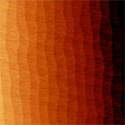The space between
Recent experiments have shown that a metal-insulator transition occurs at the interface between a layer and a substrate. As the thickness approaches four unit cells, a sharp jump in conductivity is observed when an additional single unit cell is added, but for thinner layers the interface is insulating. This behavior is believed to be the consequence of an electron gas appearing suddenly at the interface, but its origin is controversial. Mechanisms intrinsic to the structure, as well as extrinsic effects related to defects and oxygen vacancies, have been proposed.
In a Rapid Communication appearing in Physical Review B, Yaron Segal and colleagues at Yale University, US, report their investigation of structures grown by molecular beam epitaxy, which avoids the problem of defects produced by the laser deposition methods used in previous studies. With x-ray photoemission spectroscopy, the Yale group has been able to measure the strength of the electric field at the interface by looking for offsets in the electronic band structure.
Segal et al. find that the metal-insulator transition is present regardless of the growth method, suggesting that deposition-induced defects are not playing a role in the increase in conductivity. Moreover, the photoemission data reveal smaller electric fields than expected, casting doubt on the applicability of models that rely on intense charge discontinuities at the interface and indicating that the theoretical understanding of these unusual materials will need further refinement. – David Voss





